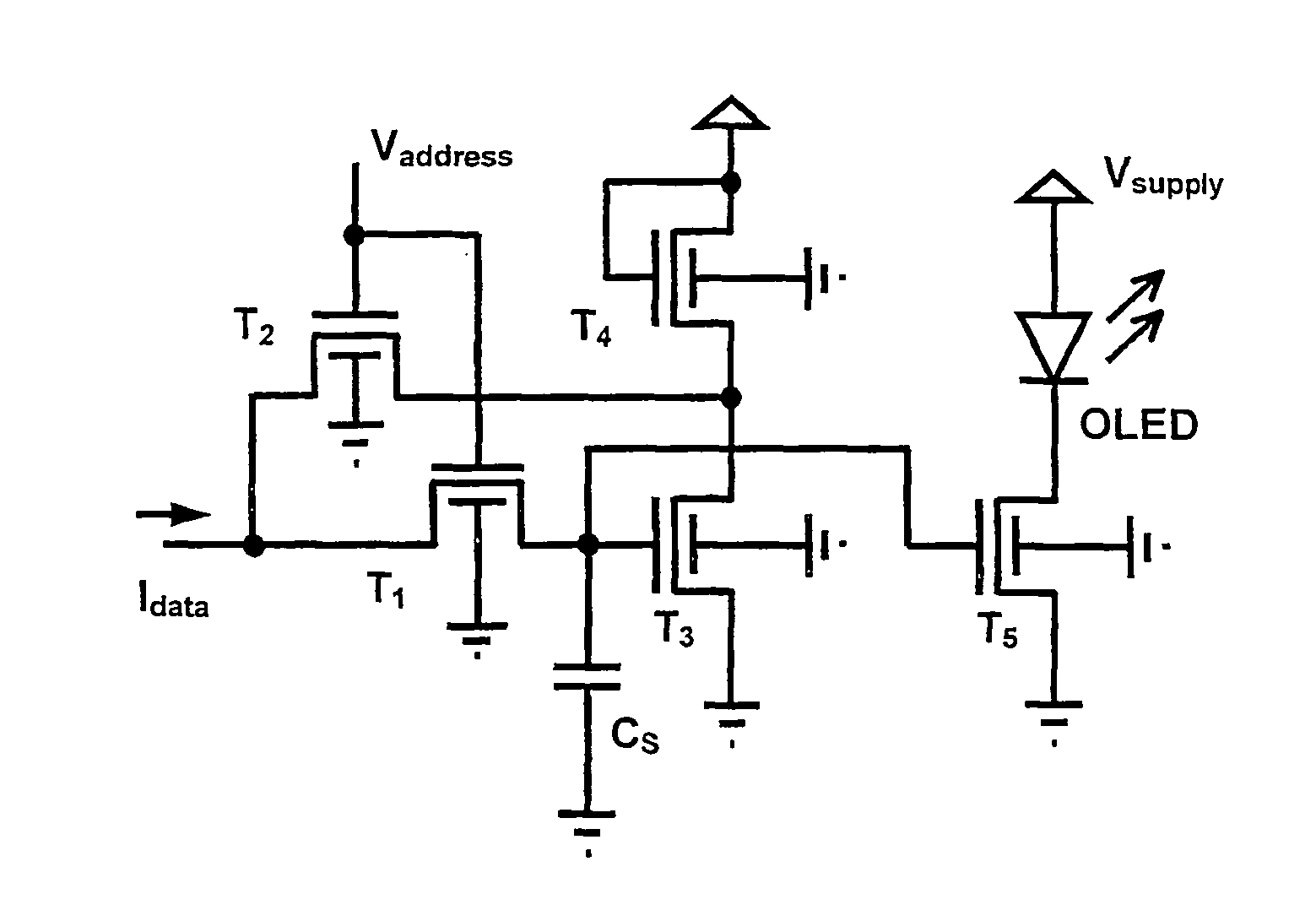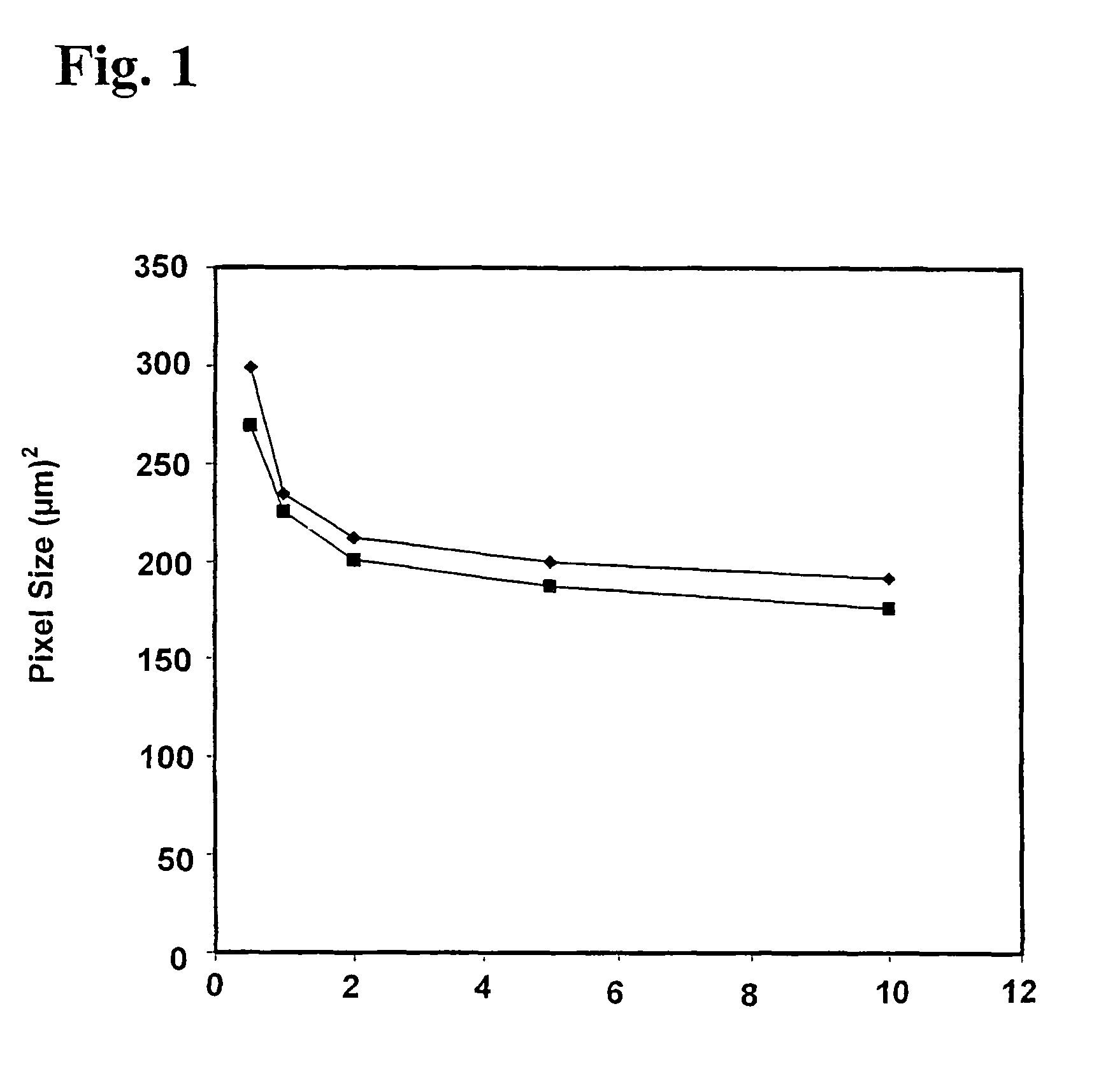Pixel current driver for organic light emitting diode displays
a technology of light-emitting diodes and current drivers, which is applied in the direction of static indicating devices, identification means, instruments, etc., can solve the problems of not supporting the resolution needed in the next-generation display, electrodes can give rise to parasitic capacitance, and the effect of significant effects is not realized, so as to minimize the charge induced in the top channel of the tft, enhance the circuit performance, and minimize the leakage current in the tft
- Summary
- Abstract
- Description
- Claims
- Application Information
AI Technical Summary
Benefits of technology
Problems solved by technology
Method used
Image
Examples
Embodiment Construction
[0031]Although amorphous Si does not enjoy equivalent electronic properties compared to poly-Si, it adequately meets many of the drive requirements for small area displays such as those needed in pagers, cell phones, and other mobile devices. Poly-Si TFTs have one key advantage in that they are able to provide better pixel drive capability because of their higher mobility, which can be of the order of μFE˜100 cm2 / Vs. This makes poly-Si highly desirable for large area (e.g. laptop size) VGA and SVGA displays. The lower mobility associated with a-Si:H TFTs (μFE˜1 cm2 / Vs) is not a limiting factor since the drive transistor in the pixel can be scaled up in area to provide the needed drive current. The OLED drive current density is typically 10 mA / cm2 at 10V operation to provide a brightness of 100 cd / m2—the required luminance for most displays. For example, with an a-Si:H TFT mobility of 0.5 cm2 / Vs and channel length of 25 μm, this drive current requirement translates into required pixe...
PUM
 Login to View More
Login to View More Abstract
Description
Claims
Application Information
 Login to View More
Login to View More - R&D
- Intellectual Property
- Life Sciences
- Materials
- Tech Scout
- Unparalleled Data Quality
- Higher Quality Content
- 60% Fewer Hallucinations
Browse by: Latest US Patents, China's latest patents, Technical Efficacy Thesaurus, Application Domain, Technology Topic, Popular Technical Reports.
© 2025 PatSnap. All rights reserved.Legal|Privacy policy|Modern Slavery Act Transparency Statement|Sitemap|About US| Contact US: help@patsnap.com



